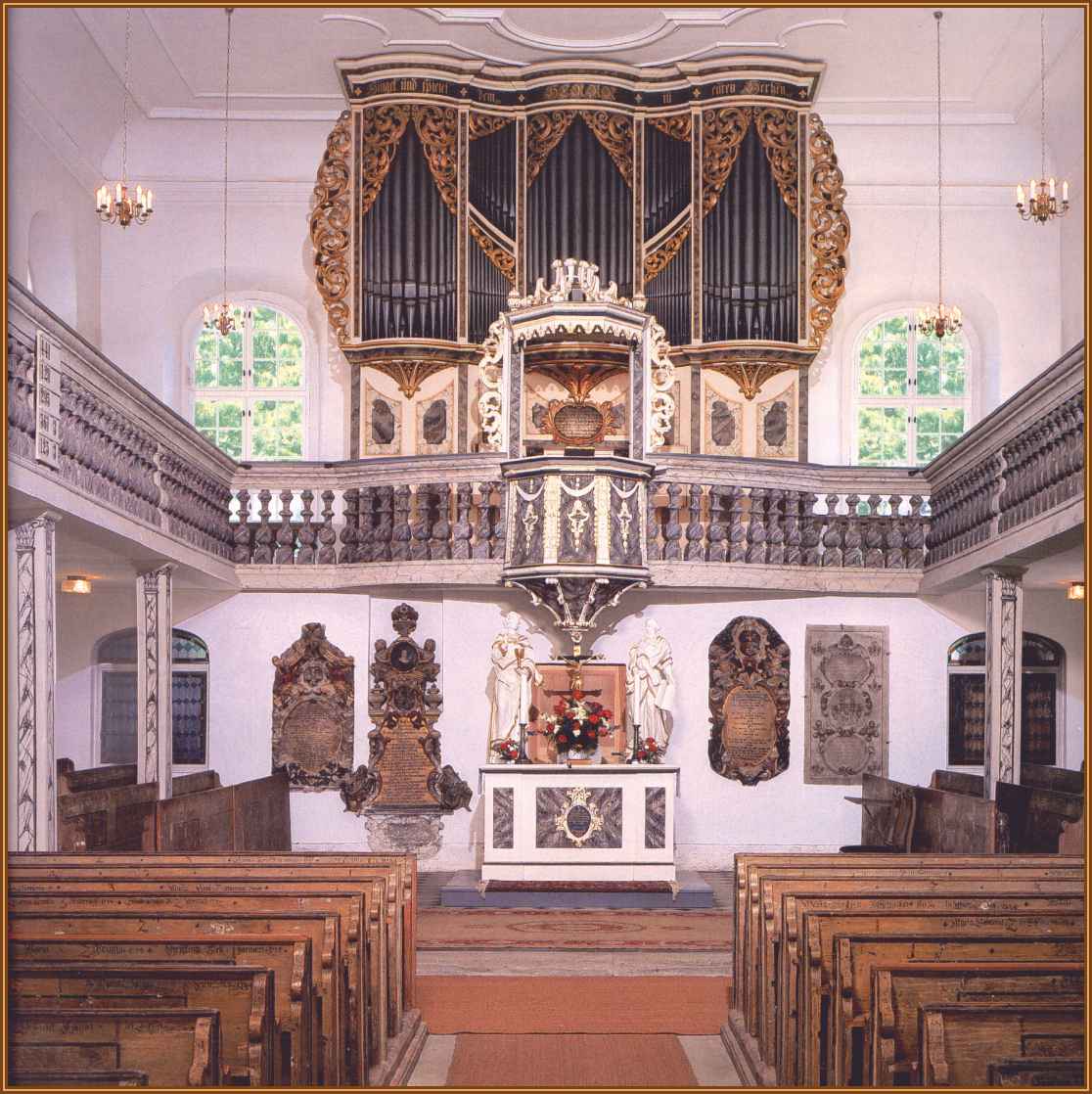That Bach's organ works should be performed on the organs of Gottfried Silbermann could hardly be more appropriate. Bach became known throughout the wider region not only as an organist and improviser, but also as a technician well-versed in the arts of organ building. Bach and Gottfried Silbermann, of similar age and living in the same area, were firm friends and colleagues. They shared an interest and advanced knowledge of acoustics as applied to the voicing and location of organs, and on a personal level we may be certain that Silbermann was a frequent visitor at the Bach home in Leipzig – he was after all godfather to Carl Philipp Emmanuel.
Silbermann was based in Freiberg, Saxony, where he had his workshop. His mainly small village instruments were built to a fairly standard model thus saving tooling costs which were passed on in the form of highest quality materials and workmanship. Perhaps the single most important feature of Gottfried Silbermann's instruments is their distinctive sounds. From the silvery flutes to the strong and reedy 16' Posaune in the pedal, Silbermann's sounds were unique, and indeed were constantly praised by organists in their testimonies of his instruments. Frequent reference is made to a play on his name, as organists praised his "Silberklang" or "Silvery Sounds". Mozart was quite clear: "These instruments are magnificent beyond measure".
On October 27th, 1738 a new church for the village of Grosshartmannsdorf was dedicated, and Gottfried Silbermann was contracted to supply a new organ. In May 1740 the organ case was completed, and in the month of July, 1741, the case was painted. On August 15th 1741 twelve 4-axel wagons made the journey from Silbermann's workshop in Freiberg bringing all the necessary materials, together with Master Silbermann and four apprentices. They were lodged in the village. Fifteen weeks later the organ was completed. It was inaugurated on December 3rd, 1741 by (Freiberg) Cathedral organist Erselius. The organ has two manuals and pedal, with 21 speaking stops.
While many of Silbermann's village organs, including the village organ at Grosshartmannsdorf, were broadly similar in specification, the Ponitz organ was in contrast a much grander affair, and indeed its price at 1500 Taler was more than double the modest 600 Taler for Grosshartmannsdorf. The extra cost went into a much more substantial specification, 27 speaking stops on two manuals and pedal, rather than the 21 at Großhartmannsdorf. A comparison of the two organ specifications is given in the notes enclosed with the disc.
The Ponitz organ was completed and handed over on November 18th, 1737. Contemporary reports show that this instrument was very highly regarded at the time, spreading the fame both of the instrument and its builder . This fine organ retains its original sound and specification, as also does the organ at Großhartmannsdorf.
To learn more about the master Saxon organ-builder, check the official Gottfried Silbermann Museum website:
GOTTFRIED SILBERMANN: Master Organ-Builder of the German Baroque
oder in deutscher Sprache:
GOTTFRIED SILBERMANN: Sächsischer Orgelbauer der deutschen Barockzeit
more detail

